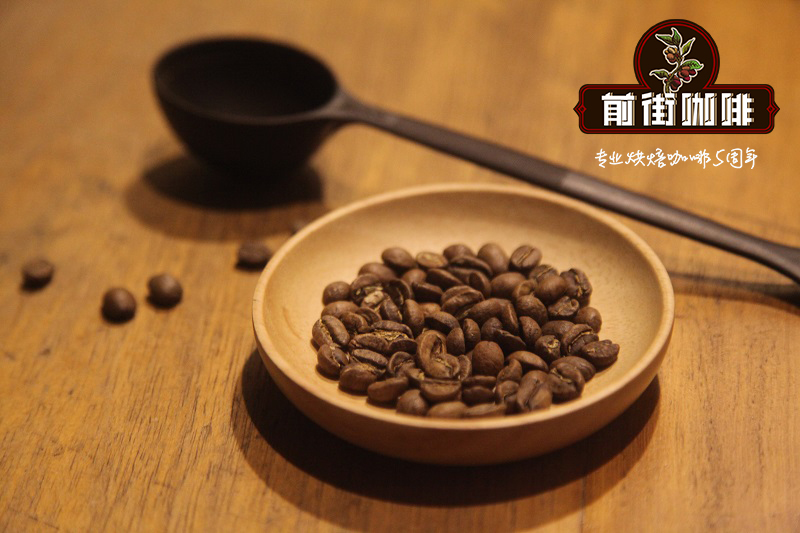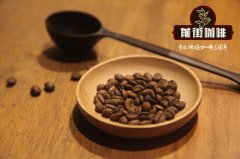Is the black coffee sour or bitter? Costa Rican coffee tastes sour and sweet and balanced.

Professional coffee knowledge exchange more coffee bean information please follow the coffee workshop (Wechat official account cafe_style)
Front Street-Costa Rican Coffee introduction
In 1729, coffee trees were transplanted from Cuba to Costa Rica, which opened the chapter of planting Arabica coffee trees in Costa Rica. In 1820, the first coffee was exported to Colombia and Chile. In 1854, the British merchant ship, the Sovereign, shipped 100 pounds of coffee to London, England, thus creating the Costa Rican "golden beans". Starbucks has had its own coffee farm since it acquired the Alsatian farm in Alajuela, Costa Rica, in 2013.
Although Costa Rica does not produce much coffee, Costa Rica has a very wide variety of coffee beans, such as Kaduai, New World, Tibica and so on. However, to be characteristic of Costa Rica, it should be Vera Villa Sarchi and Costa Rica 95.
Vera Villa Sarchi: in the 1960s, Vera Saatchi was first discovered in Costa Rica and became an endemic variety of Costa rica. it has a clear flavor and is characterized by sweet and soft acidity and a smooth taste. Controlling the bitterness can make the taste milder.
Only step in the global honey treatment
Because the surface mucosa of coffee beans is extremely slippery and the sugar content is extremely high, it is often called "honey". In the process of honey treatment, coffee will leave some or all of the "honey" when it is dried. After the coffee fruit is picked, graded and peeled, it is placed on a drying bed to dry.
From left to right are natural washing method, honey treatment method, water washing method and natural drying method.
Because the drying time of the mucous membrane is very short, coffee beans hardly ferment during the drying process. The acidity of coffee beans processed by this method is slightly higher than that of natural washing, but much lower than that of natural washing and natural sun processing.
Honey treatment classification:
Black honey: hardly removes pectin, so it takes the longest time to dry and lasts for more than two weeks. in order to avoid drying too fast, cover will be used to block too strong sunlight to make sugar conversion more fully.
Red honey: remove 25% pectin (the specific methods of each manor vary), the sun lasts for about 12 days, and shading sheds may also be used in the process.
Yellow honey: remove 40% pectin and accept maximum light drying for about 8 days until the moisture content is stable.
In short: Qianjie is a coffee research hall, happy to share the knowledge about coffee with you, we share unreservedly just to make more friends fall in love with coffee, and there will be three low-discount coffee activities every month. The reason is that Qianjie wants to make more friends drink the best coffee at the lowest price, which has been Qianjie's tenet for 6 years!
END
Important Notice :
前街咖啡 FrontStreet Coffee has moved to new addredd:
FrontStreet Coffee Address: 315,Donghua East Road,GuangZhou
Tel:020 38364473
- Prev

How about Cuban Arabica coffee? Cuban amber coffee. Its brother's name is Blue Mountain Coffee.
Professional coffee knowledge exchange more coffee bean information please follow the coffee workshop (Wechat official account cafe_style) front street-Cuba Coffee introduction she is known as a unique Caribbean flavor coffee, island coffee beans in the special coffee beans. She is full-grained, bright in color, even in taste and smells of tobacco. She is the coffee designated by the Cuban embassy and has attended the 50th anniversary of Sino-Cuban friendship.
- Next

Is black coffee sour or not sour? does Costa Rican coffee taste sour?
Professional Coffee knowledge Exchange more information on coffee beans Please follow the front street of Coffee Workshop (Wechat official account cafe_style)-Costa Rican Coffee introduces that coffee requires elegant and attractive acid to have a higher score, which includes that coffee itself contains a lot of organic acids (chlorogenic acid, malic acid, citric acid, gluconic acid, etc.). At the same time, the synthesis of a large number of fruit alcohol esters, aldehydes and ketones
Related
- Beginners will see the "Coffee pull flower" guide!
- What is the difference between ice blog purified milk and ordinary milk coffee?
- Why is the Philippines the largest producer of crops in Liberia?
- For coffee extraction, should the fine powder be retained?
- How does extracted espresso fill pressed powder? How much strength does it take to press the powder?
- How to make jasmine cold extract coffee? Is the jasmine + latte good?
- Will this little toy really make the coffee taste better? How does Lily Drip affect coffee extraction?
- Will the action of slapping the filter cup also affect coffee extraction?
- What's the difference between powder-to-water ratio and powder-to-liquid ratio?
- What is the Ethiopian local species? What does it have to do with Heirloom native species?

